The J-10 (Jian 10 or Fighter 10) is China’s indigenously built multirole fighter aircraft developed by the Chengdu Aircraft Industry. Chengdu Aircraft Industry is part of the China Aviation Industry Corporation I (AVIC I). In the West the J-10 aircraft is known as the Vigorous Dragon.
It is estimated that up to 300 J-10 fighter aircraft will be manufactured. China’s People’s Liberation Army (PLA) includes the army, navy, air force and strategic rocket force. The air force (AFPLA) has 200 fighter and fighter ground attack squadrons and 120 strike fighter squadrons.
The J-10 aircraft is considered the replacement for the J-7 and Q-5. The air force currently operates about 250 J-7 (MiG-21) air defence and attack aircraft and about 500 Q-5 attack aircraft.
J-10 multirole fighter development
The development task was handed over to the Chengdu Aircraft Design Institute (also known as 611).
In January 1986, the State Council and the Central Military Commission jointly issued a document to approve the development of the J-10 project, code-named No. 10 project – “At that time, the F16 was positioned, and the gap was very large.” Xu De said.
At that time, some domestic experts seemed to catch up with the F16. At that time, China’s most advanced J-8 fighters were only second-generation aircraft, and the advanced third-generation fighters, the US F15, F16 and the Soviet MiG-29, have begun to equip and apply actual combat.
At the age of 56, Song Wenzhao was the chief designer of the J-10. He had previously designed the 歼-7C, which was nominally made in China, but the technology was still a copy of the Soviet MiG-21. Translated by google – Source jczs.news.sina.com.cn
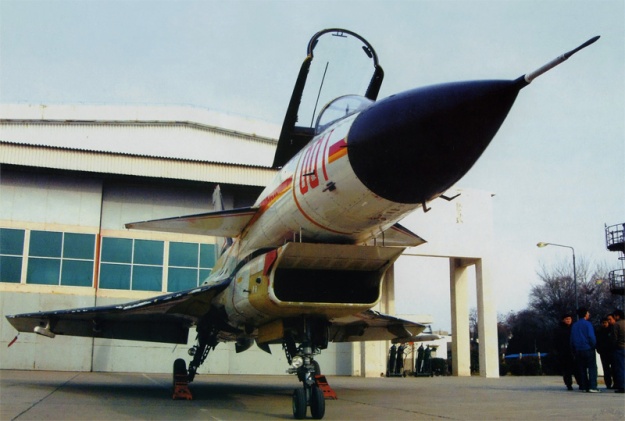 Chinese Air Force’s 歼10 fighter aircraft prototype 001 – Source: sinodefence.wordpress.com
Chinese Air Force’s 歼10 fighter aircraft prototype 001 – Source: sinodefence.wordpress.com
J-10 (Jian-10 Fighter aircraft 10) / F-10
The J-10 [the export version being designated F-10] is a multi-role single-engine and single-seat tactical fighter, with its combat radius of 1,000 km. It is designed for point defensive warfare with performance generatlly matching aircraft such as the Mirage 2000 deployed by Taiwan. Apparently, Chinese engineers are trying to develop the J-10 from a single F-16 provided by Pakistan, and with assistance from Israeli engineers associated with Israel’s US-financed Lavi fighter program, which was cancelled in 1987.The acquisition of Su-27, after China had attempted for years to develop the J-10 aircraft with equivalent technology to perform similar functions, demonstrates a lack of confidence in domestic industrial capabilities. China’s record on reverse engineering aircraft has not been impressive, and it remains in doubt whether the J-10 will ever join China’s interceptor inventory.
It is unclear what specific technologies and systems Israel has provided, although it is reported that the Jian-10’s radar and fire-control system is the Israeli-made ELM-2021 system, which can simultaneously track six air targets and lock onto the four most-threatening targets for destruction. Some experts believe that the Israeli contribution will focus on avionics and radar, with Russia supplying the engines. In December 1991, US intelligence officials announced that Israel was planning to open a government coordinated and sponsored “arms office” in the PRC. In light of what the Israelis have to offer, and what the Chinese need, it was most likely that a transfer of avionics and other technologies developed in the Lavi program would ensue, since there is a void in the Chinese avionics and fire control system capability due to the 1989 termination of a US/Chinese program in response to Tienanmen square.
China and Israel started collaboration in the early 1980’s and full-scale cooperation was underway officially by 1984. After the 1987 cancellation of the Lavi, it was taken over by CAIC and the IAI carried on with the development of avionic equipment. However, the Lavi project had included many elements that Israel could not develop by itself, and China cannot obtain these key technologies from the United States, which has consequently substantially increased the technical difficulties of the F10. In addition, there are certain difference between the Israeli and Chinese requirements for the aircraft. Since Israel already already had fighters such as the F-15, its primary requirement for the Lavi was short-range air support and interdiction, with a secondary mission of air superiority. In contrast, the Chinese Air Force is interested in replacing its large fleet of outmoded J-6 and J-7 fighters, for which air superiority capabilities remain a top priority while the air-to-ground attack capability is of secondary importance.
Since neither China nor Israel is capable of developing the propulsion system required by the J-10, in 1991 China acquired the AI31F turbofan engine from Russia for incorporation into the J-10 fighter. This engine is also used in the Su-27 air superiority fighter that Chinese acquired from Russia. The performance of the AL31F engine is significantly better than that of the American PW1120 originally slated for the Lavi, it may be anticipated that the performance of the J-10 will be accordingly enhanced.
The J-10 features a delta wing canard configuration which ensures aircraft stability with widened static stability active control technology. The deep burial of the engine and the extensive use of composite materials for wing-fuselage fusion design reduces the aircraft’s radar signature. This aircraft uses control-figured vehicle design and nine independent control planes: two forward wings, two forward wing flaps, two inside elevons, two outside elevons, and one vertical rudder. Source fas.org
 J-10A
J-10A
China formally announced the J-10 in February 2007. The existence of the J-10 was first reported in 1994, but the J-10 programme was started in 1988 and the first flight of the single seat aircraft took place in 1998. A two-seater variant made its first flight in 2003.
 J-10A
J-10A
There are reports that the J-10 entered service in 2005 and is operational in single seater and two seater versions in at least two PLA air force squadrons.
The first native fourth-generation J-10 aircraft was unveiled by the air force in April 2010. Four J-10 fighter jets were showcased by the 24th fighter division of AFPLA. Pakistan will receive the first export versions of the J-10, up to 36 aircraft, by 2015. China and Pakistan have worked closely on the development of another fighter aircraft, the JF-17 or FC-1 light fighter aircraft.
 Richard Ferriere
Richard Ferriere
Pakistan order of J-10 has been cancelled as of 2016. Pakistan Air Force is focussing on JF-17 Block 3 and in future it is looking to procure the export version of J-31.
JF-17 or FC-1 light fighter aircraft: Details
Falcon Strike 2017: Video
Variants
J-10B
 J-10B
J-10B
The improved J-10B single-seat fighter began flight test in December 2008. The most distinctive feature of this variant is its chin-mounted diffuser supersonic inlet (DSI), which employs a one-piece bump at the top of the inlet replacing the original movable ramp on the basic variant J-10. This eliminates all moving parts on the inlet, lightening the overall weight and reducing the aircraft’s radar signature.
 J-10B
J-10B
The J-10B has been added with an electronic-optic targeting system (EOTS). Placed forward of the cockpit canopy to the right, the system comprises an infrared search and track (IRST) sensor and a laser rangefinder, which can detect enemy targets passively without requiring to turn on the fire-control radar, thus reducing the chance of the aircraft being detected.
 J-10B – chinamil.com.cn
J-10B – chinamil.com.cn
The aircraft has also been upgraded with an improved suite of avionics, including an indigenous passive electronically scanned array (PESA) fire-control radar, capable of engaging 4 targets simultaneously. The upper edge of the aircraft’s tailfin is curved, in contrast to the straight-edged tailfin of the J-10. A large fairing is added to the tip of the tailfin to accommodate electronic warfare and countermeasures (EW/ECM) equipment. There are also four black electronic countermeasures (ECM) antenna arrays attached externally to the fuselage, a larger one on either side of the cockpit and a smaller one on either side of the rear fuselage near the engine nozzle.
 Upper edge of the tailfin is curved, and a large fairing is added to the tip of the tailfin to accommodate electronic warfare and countermeasures (EW/ECM) equipment – chinamil.com.cn
Upper edge of the tailfin is curved, and a large fairing is added to the tip of the tailfin to accommodate electronic warfare and countermeasures (EW/ECM) equipment – chinamil.com.cn
After years of flight testing and evaluation, the J-10B finally entered operational service with the PLAAF in 2014, when the production of the basic variant J-10A stopped. The J-10B production continued until May 2015, after some 50 examples had been delivered. The production has subsequently switched to the newer J-10C variant.
J-10C
The latest addition to the J-10 family is the J-10C single-seat fighter, which made first flight in December 2013. This variant is almost identical to the B variant in appearance, but features an indigenous active electronically scanned array (AESA) fire-control radar and increased use of composite materials in its airframe for reduced radar cross section (RCS) profile. The aircraft began delivery to the PLAAF in late 2016, and was first unveiled during the flypast on 30 July 2017 to celebrate the 70th anniversary of the founding of the PLA. Source sinodefence.com
J-10D Fan-art
FC-20 (Export version)
 FC-20 – gogonews.cc
FC-20 – gogonews.cc
J-10 design
The structure of the aircraft is based on a tail-less delta (triangular planform) wing, foreplanes and a sweptback vertical tail. There are two fixed, outwardly canted ventral (on the underside of the body) fins near the tail.
 Two fixed outwardly canted ventral (on the underside of the body) fins near the tail
Two fixed outwardly canted ventral (on the underside of the body) fins near the tail
The size and design of the J-10 are very similar to that of the Israeli Aircraft Industries Lavi fighter aircraft, which itself is similar to and derived technology from the USAF F-16 aircraft.
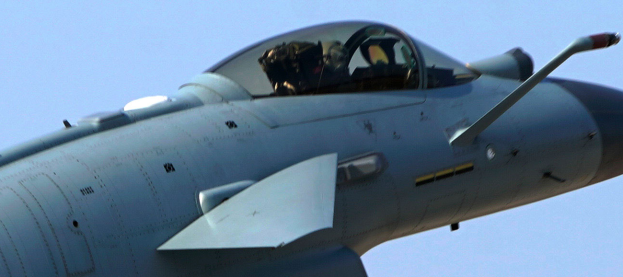 Foreplanes – chinamil.com.cn
Foreplanes – chinamil.com.cn
The horizontal close-coupled foreplanes (larger than those on the Lavi) on the forward fuselage improve the take-off and low-speed handling characteristics.
Weapons
 J-10B – sinodefence.com
J-10B – sinodefence.com
The J-10 has 11 external hardpoints: five hardpoints on the fuselage with one on the centreline and a pair of hardpoints on each side of the fuselage, and three hardpoints on each wing.
The outer wing stations carry air-to-air missiles such as the Chinese built Python 3 PL-8, P-11 or PL-12 or the Russian Vympel R-73 (AA-11 Archer) or R-77 (AA-12 Adder).
The PL-8 infrared homing short-range air-to-air missile is manufactured in China under a licensed production agreement by the China Academy (formerly the Luoyang Electro-optics Technology Development Centre) and is a variant of the Israeli Python 3 missile. The PL-11 is a licensed-manufactured variant of the MBDA Italy Aspide medium-range air-to-air missile.
The PL-12 missile is manufactured in China under a collaborative agreement with Russia. It uses the Russian AA-12 Adder missile technology configured with a Chinese-developed rocket motor to give a range of 50 miles and speed of Mach 4.
Chinese built Python 3 PL-8
The PL-8 is a legally licenced copy of the Israeli Rafael Python 3 WVR missile, the predecessor to the widely exported and highly agile Python 4. Production of the PL-8 commenced during the late 1980s, five years after initial negotiations, the weapon has been integrated on a wide range of aircraft, including the J-7E Fishbed, J-8B/D Finback and new J-10 and J-11B. Comparable to the AIM-9L in basic performance, the PL-8 is an all aspect WVR missile designed for close combat, and credited with a 35 G capability. Chinese sources claim it has been integrated with a helmet mounted sight. Source ausairpower.net
Dimensions
Diameter: 0.16 meter (6.30 inch)
Length: 2.99 meter (118 inch)
Wingspan: 0.81 meter (31.9 inch)
G-load
Max Maneuvering Load Factor: 35 g
Performance
Max Range: 15 kilometer (8.10 nautical mile)
Min Range: 500 meter (0.27 nautical mile)
Speed
Top Speed: 2 mach (2,391 kph)
Weight
Warhead: 11 kilogram (24.3 pound)
Weight: 115 kilogram (254 pound)
Source deagel.com
P-11
The PL-11 is derived from a licenced copy of the Selenia Aspide, itself an improved variant of the AIM-7E Sparrow. China had initially experimented with cloning the AIM-7B as the Luoyang PL-4, with a heatseeking and semi-active radar variant planned. This project was abandoned during the 1980s, in favour of the improved PL-10, itself abandoned later in favour of the licenced Aspide, the latter having the advantage of a jam resistant monopulse seeker.
While it is known that Selenia withdrew support for the Aspide licence following 1989, the PL-11 was nevertheless deployed in the 1990s, on the indigenous J-8B Finback. Three variants are cited, the basic semi-active homing PL-11 equivalent to an Aspide Mk.1, the improved PL-11A with more range and a midcourse inertial unit permitting terminal phase only illumination, and the PL-11B or PL-11AMR, claimed to be equipped with an active radar seeker and equivalent to the defunct UK BAe Active Skyflash or Aspide Mk.2 – both AIM-7 derivatives. Source ausairpower.net
| GENERAL DATA: | |
|---|---|
| Type: Guided Weapon | Weight: 220 kg |
| Length: 3.89 m | Span: 0.68 m |
| Diameter: 0.2 | Generation: None |
| Properties: Illuminate at Launch, Anti-Air All-Aspect |
| Targets: Aircraft, Missile |
| SENSORS / EW: |
|---|
| SARH Seeker – (Aspide AAM) Semi-Active Weapon Seeker, Semi-Active Radar Homing (SARH) Max Range: 37 km |
| WEAPONS: |
|---|
| PL-11 [Aspide] – (2002, AAM) Guided Weapon Air Max: 55.6 km. |
Source cmano-db.com
PL-12
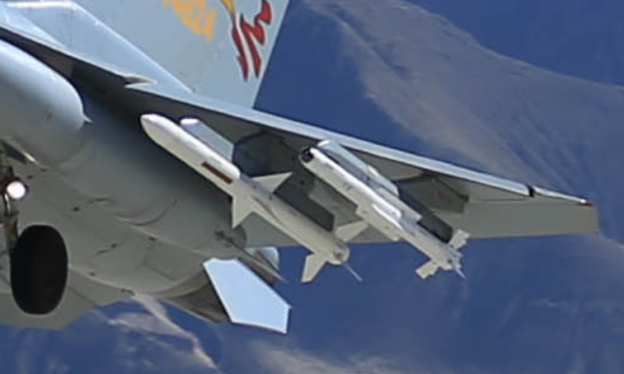 PL-12 (left) and PL-10 (right)
PL-12 (left) and PL-10 (right)
While some confusion remains about designations, most sources identify the SD-10 and PL-12 as the same missile, China’s equivalent to the AMRAAM. This weapon is in sizing and configuration very similar to the AIM-120A, but employs a unique tail planform. Equipped with an active radar seeker, and datalink aided inertial midcourse guidance, this missile is a credible player against the AMRAAM and R-77 series. The indigenous AMR-1 active seeker is identified with the PL-12, and numerous reports exist claiming that it is a derivative of the Russian Agat 9B-1348E seeker package used in the R-77 series. The missile is widely credited with superior range performance to the AIM-120A-C variants.
The production status of the PL-12 is unclear, but the missile has been claimed as a future weapon for the indigenous J-10 fighter and the Su-27SK and Su-30, replacing imported R-77s on the latter. The missile has been photographed on the J-10A, J-10S and J-11B.
A variant with an all aspect infrared seeker may exist, analogous to Russian heatseeking variants of the R-27 / AA-10 Alamo and R-77 / AA-12 Adder.
There is little doubt that the PL-12 closes most of the technology gap between Chinese built BVR missiles, and in service Western BVR missiles. Source ausairpower.net
| GENERAL DATA: | |
|---|---|
| Type: Guided Weapon | Weight: 199 kg |
| Length: 3.93 m | Span: 0.75 m |
| Diameter: 0.2 | Generation: None |
| Properties: Home On Jam (HOJ), Anti-Air All-Aspect, Capable vs Seaskimmer |
| Targets: Aircraft, Missile |
| SENSORS / EW: |
|---|
| Active Radar Seeker – (AAM MR, PL-12) Radar Weapon Seeker, Active Radar Max Range: 9.3 km |
| WEAPONS: |
|---|
| PL-12 – (2004) Guided Weapon Air Max: 92.6 km. |
Source cmano-db.com
PL-10
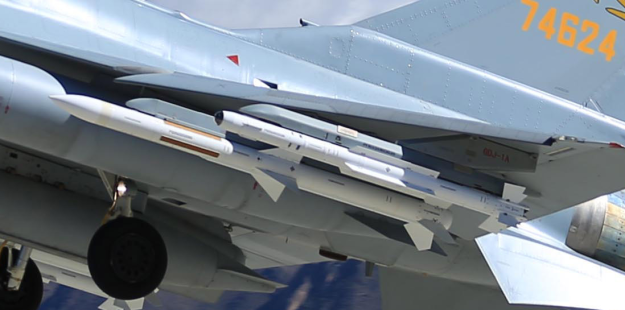 PL-10 foreground
PL-10 foreground
Key Points
- The PL-10E will be sold as a potential weapons upgrade for existing 4th-generation fighter fleets, or as part of a package with the Chengdu J-10B or Shenyang FC-31 fighter aircraft
- PL-10/PL-10E has a maximum range of 20 km
During the 11th China International Aviation & Aerospace Exhibition, or Zhuhai Air Show 2016, China unveiled the PL-10E, an export variant of the PL-10 5th-generation short-range imaging infrared (IIR) homing air-to-air missile (AAM), which itself intended to equip the People’s Liberation Army Air Force (PLAAF) 5th-generation stealth fighter aircraft.
The PL-10 SRAAM is produced by the Luoyang-based China Air-to-Air Guided Missile Research Institute (formerly the Luoyang Electro-Optics Technology Development Centre), a subsidiary of the Aviation Industry Corporation of China (AVIC) consortium, and the designer and manufacturer of all infrared (IR) homing variants in China’s PL (Pi Li/Thunderbolt) series AAMs. Source janes.com
| GENERAL DATA: | |
|---|---|
| Type: Guided Weapon | Weight: 85 kg |
| Length: 2.9 m | Span: 0.45 m |
| Diameter: 0.13 | Generation: None |
| Properties: Anti-Air Dogfight (High Off-Boresight), Capable vs Seaskimmer |
| Targets: Aircraft, Missile |
| SENSORS / EW: |
|---|
| IIR Seeker – (PL-10E) Infrared Weapon Seeker, Imaging IR Max Range: 18.5 km |
| WEAPONS: |
|---|
| PL-10 – (2018) Guided Weapon Air Max: 20 km. |
Source cmano-db.com
PL-15
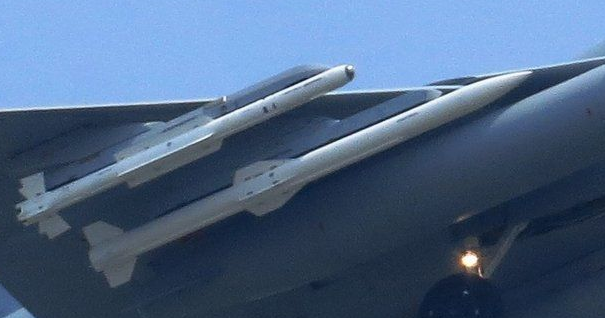 PL-10 air-to-air missiles hang from the outboard wing pylons and long-range PL-15s from the inboards
PL-10 air-to-air missiles hang from the outboard wing pylons and long-range PL-15s from the inboards
Developed by the 607 Institute, the PL-15 (Pi Li or Thunderbolt), is China’s latest beyond-visual-range air-to air missile (BVRAAM). It achieved a first firing in September 2015. Powered by a dual-pulse rocket motor, the PL-15 has a maximum speed of Mach 4 and is reported to achieve a standoff range of 300 km. In comparison, its predecessor PL-12 has a range of 100 km, similar to its Western counterpart, the AIM-120C AMRAAM. According to Chinese reports, the PL-15 will enable the PLAAF to down enemy high-value assets such as tankers and AEW aircraft, beyond the engagement range of their escorts. Source ainonline.com
 PL-10 air-to-air missiles hang from the outboard wing pylons and long-range PL-15s from the inboards
PL-10 air-to-air missiles hang from the outboard wing pylons and long-range PL-15s from the inboards
| GENERAL DATA: | |
|---|---|
| Type: Guided Weapon | Weight: 199 kg |
| Length: 3.93 m | Span: 0.75 m |
| Diameter: 0.2 | Generation: None |
| Properties: Home On Jam (HOJ), Anti-Air All-Aspect, Capable vs Seaskimmer, Level Cruise Flight |
| Targets: Aircraft, Missile |
| SENSORS / EW: |
|---|
| Active Radar Seeker – (AAM MR, PL-15) Radar Weapon Seeker, Active Radar Max Range: 11.1 km |
| WEAPONS: |
|---|
| PL-15 – (2018+) Guided Weapon Air Max: 174.1 km. |
Source cmano-db.com
The aircraft can be armed with laser-guided bombs, the anti-ship YJ-8K or C-801K solid rocket powered missiles, the C-802 land attack and anti-ship turbojet-powered missiles manufactured by CHETA, and the YJ-9 anti-radiation missile.
YJ-8K or C-801K anti-ship missiles
YJ-81K/C-801K anti-ship cruise missiles C-801 is a subsonic Chinese anti-ship missile (AShM) developed in the 1980s, receiving NATO reporting name CSS-N-4 Sardine. Designated as YJ-8 (YJ is the abbreviation of Yingji, or 鹰击 in Chinese, meaning Eagle Strike), this originally surface platform based missile would become the foundation based on which several other missiles developed, such as YJ-1, the submarine-launched version, and YJ-81, the air-launched version. More advanced missiles such as C-802 and C-803, as well as land strike and anti-radiation versions were also subsequently developed. YJ-81: Air-launched version without the booster. Operational range 40km at ≈ Mach > 0.75+
| GENERAL DATA: | |
|---|---|
| Type: Guided Weapon | Weight: 655 kg |
| Length: 4.65 m | Span: 1.18 m |
| Diameter: 0.36 | Generation: None |
| Properties: Home On Jam (HOJ), Terrain Following, Search Pattern, Bearing-Only Launch (BOL), Weapon – INS Navigation, Level Cruise Flight |
| Targets: Surface Vessel |
| SENSORS / EW: |
|---|
| Active Radar Seeker – (ASM MR, C-801) Radar Weapon Seeker, Active Radar Max Range: 9.3 km |
| Passive Radar Seeker – (C-801) ESM Weapon Seeker, Anti-Radiation Max Range: 18.5 km |
| WEAPONS: |
|---|
| C-801K [YJ-81] – (1999, Air) Guided Weapon Surface Max: 46.3 km. |
Source cmano-db.com
YJ-91 anti-radiation missile
 2 × YJ-91 ARM with data link , ECM KG500, K/RKL700A, PL-8 AAM
2 × YJ-91 ARM with data link , ECM KG500, K/RKL700A, PL-8 AAM
The Kh-31P high-speed medium-range “air-to-surface” guided missile with changeable passive radar homing heads is designed to engage radars operating within long- and medium-range air defence missile systems, as well as other ground- and sea-based radars of different purpose, in the corresponding frequency band.
The Kh-31P missile can be efficiently launched either independently or in salvo, in fair and adverse weather conditions, to engage radar targets of opportunity or previously disclosed ones.
The missile can be equipped with changeable homing heads operating in coresponding frequency bands used by modern continuous-wave and pulsed radars of surface-to-air missile and anti-aircraft artillery systems.
The missile’s radar homing head ensures:
– target search and lock-on in the autonomous mode, or by receiving target designation data from carrier’s sensors with the missile on the aircraft suspension station;
– target tracking and missile guidance command generation.
It has a high explosive/fragmentation type of warhead.
Performance:
| Launch range envelope, km | 15-110 |
| Launch altitude envelope, m | 100-15,000 |
| Launch speed envelope, km/h (Mach number) | 600-1,250 |
| (0,65-1,5) | |
| Max missile cruising speed, m/s | 1,000 |
| Warhead weight, kg | 87 |
| Missile launch weight, kg | about 600 |
| Missile dimensions, m: | |
| length | 4,7 |
| body diameter | 0,36 |
| wing span | 0,914 |
Source ktrv.ru
*Note techincal data is of Kh-31P
A 23mm cannon is installed internally on the port side of the forward section of the fuselage above the nosewheel.
23mm twin-barrel GSh-23L auto cannon
The GSh-23 functions on the Gast principle. In this twin barrel setup the recoil from one barrel cycles the action of the other, allowing for an instant high rate of fire. The GSh-23 is belt fed from a single belt. The GSh-23L adds a muzzle brake that helps reduce recoil. Both GSh-23 and GSh-23L are solenoid fired.
The GSh-23 fires the 23x115mm round that is also widely used in other Soviet aircraft cannon. The rate of fire is 3.000 to 3.400 rpm and is instantly achieved as opposed to Gatling type weapons. The muzzle velocity of 715 m/s is low compared to other modern aircraft cannon.
| Type | Autocannon |
| Caliber | 23x115mm AM-23 |
| Mechanism | Gas operated, Gast principle |
| Barrel | Twin barrel, 1.000 m, rifled, 10 grooves, 575 mm right hand twist |
| Dimensions | 1.387 m long, 165 mm wide, 168 mm tall |
| Weight | 50 kg |
| Feeding | Single belt feed |
| Rate of fire | 3.000 – 3.400 rpm |
| Muzzle velocity | 700 – 730 m/s |
| Recoil | 2.900 kg recoil force |
| Remarks | Muzzle brake |
Source weaponsystems.net
 chinamil.com.cn
chinamil.com.cn
Unguided weapon 57mm Rocket
| GENERAL DATA: | |
|---|---|
| Type: Rocket | Weight: 4 kg |
| Length: 0.91 m | Span: 0.23 m |
| Diameter: 0.06 | Generation: None |
| Targets: Surface Vessel, Land Structure – Soft, Land Structure – Hardened, Mobile Target – Soft, Mobile Target – Hardened |
| WEAPONS: |
|---|
| 57mm Rocket – (Generic) Rocket Surface Max: 1.9 km. Land Max: 1.9 km. |
Unguided weapon 90mm Rocket
| GENERAL DATA: | |
|---|---|
| Type: Rocket | Weight: 17 kg |
| Length: 1.21 m | Span: 0.34 m |
| Diameter: 0.09 | Generation: None |
| Targets: Surface Vessel, Land Structure – Soft, Land Structure – Hardened, Mobile Target – Soft, Mobile Target – Hardened |
| WEAPONS: |
|---|
| 90mm Rocket – (Generic) Rocket Surface Max: 3.7 km. Land Max: 3.7 km. |
 chinamil.com.cn
chinamil.com.cn
Sensors
The aircraft could be fitted with a forward-looking infrared and laser target designator pod. The China Aviation Industry Corporation I (AVIC I) has displayed an exhibition model of the J-10 fitted with targeting pods, which would provide the capability of the J-10 to deploy laser and satellite navigation guided weapons.
Indigenous IRST/LR
The aircraft also features a new indigenous IRST/LR in front of the canopy, a white IFR probe light on the starboard side of the nose, a JF-17 style glass cockpit with a wide-angle holographic HUD, three large color MFDs and an HMDS. The new IRST allows passive detection of enemy aircraft, making J-10B more stealthy in combat. Its nose appears flatter too, similar to that of American F-16. Source chinese-military-aviation.blogspot.com
| GENERAL DATA: | |
|---|---|
| Type: Infrared | Altitude Max: 0 m |
| Range Max: 185.2 km | Altitude Min: 0 m |
| Range Min: 0 km | Generation: Infrared, 3rd Generation Imaging (2000s/2010s, Impr LANTIRN, Litening II/III, ATFLIR) |
| Properties: Identification Friend or Foe (IFF) [Side Info], Classification [Class Info] / Brilliant Weapon [Automatic Target Aquisition], Continous Tracking Capability [Visual] |
| SENSORS / EW: |
|---|
| Generic IRST – (3rd Gen Imaging) Infrared Role: IRST, Imaging Infrared Seach and Track Max Range: 185.2 km |
Source cmano-db.com
Possible pulse Doppler radar fits include the Chinese Type 1473 radar, Russian Phazotron Zhuk-10PD or Zhemchug, the Chinese JL-10A, the Israeli IAI Elta EL/M-2023 or the Italian Galileo Avionica Grifo 2000.
Chinese Type 1473 radar
 J-10B – L Guo
J-10B – L Guo
| GENERAL DATA: | |
|---|---|
| Type: Radar | Altitude Max: 0 m |
| Range Max: 148.2 km | Altitude Min: 0 m |
| Range Min: 0.2 km | Generation: Early 2000s |
| Properties: Identification Friend or Foe (IFF) [Side Info], Pulse Doppler Radar (Full LDSD Capability), Active Electronically Scanned Array (AESA), Continuous Wave Illumination |
| SENSORS / EW: |
|---|
| China KLJ-3 PESA [Zhemchoug] – (J-10B) Radar Role: Radar, FCR, Air-to-Air, Medium-Range Max Range: 148.2 km |
Source cmano-db.com
China KLJ-X AESA – Zhemchoug (J-10C) Type 1478?
| General data: | |
|---|---|
| Type: Radar | Altitude Max: 0 m |
| Range Max: 148.2 km | Altitude Min: 0 m |
| Range Min: 0.2 km | Generation: Late 2010s |
| Properties: Identification Friend or Foe (IFF) [Side Info], Pulse Doppler Radar (Full LDSD Capability), Active Electronically Scanned Array (AESA), Continuous Wave Illumination |
| Sensors / EW: |
|---|
| China KLJ-X AESA [Zhemchoug] – (J-10C) Radar Role: Radar, FCR, Air-to-Air, Medium-Range Max Range: 148.2 km |
Source cmano-db.com
K/RKL700A (KG600?)
K/JDC01A FLIR/laser designation pod
| GENERAL DATA: | |
|---|---|
| Type: Sensor Pod | Weight: 0 kg |
| Length: 0.0 m | Span: 0.0 m |
| Diameter: 0.0 | Generation: None |
| Properties: Pod – Night Navigation/Attack (Incl. Bomb, Rocket Delivery) |
| SENSORS / EW: |
|---|
| Blue Sky [Laser Designator] – (WMD-7?) Laser Designator Laser Target Designator & Ranger (LTD/R) Max Range: 18.5 km |
| Blue Sky [FLIR] – (WMD-7?) Infrared Infrared, Attack FLIR Max Range: 55.6 km |
Source cmano-db.com
Cockpit
The single-seat fighter aircraft is also being developed in a two-seat variant as a trainer aircraft and as an electronic warfare aircraft. The first flight of the two-seat variant was completed in 2003. The cockpit is fitted with a zero-zero ejection seat.
The aircraft has a digital fly-by-wire flight control system and HOTAS (hands-on throttle and stick) control on which the pilot has every control for combat incorporated into the two handholds.
Cockpit displays include a helmet-mounted weapon sight, a wide field of view head-up display and one full-colour and two monochrome liquid crystal multifunction displays. The avionics are served by a 1553B databus.
Engine
 J-10B – chinamil.com.cn
J-10B – chinamil.com.cn
The aircraft is powered by the AL-31 turbojet engine supplied by Saturn Lyulka. The prototype aircraft and the first series of production aircraft are fitted with the AL-31FN developing 79kN and 123kN with afterburn, and which is the currently used in the Chinese Air Force Su-27 and Su-30 aircraft.
AL-31FN
The AL-31F engines have modular design, with a four-stage variable low-pressure compressor and a two-shaft turbine. The nine-stage high-pressure compressor has a variable-area first group of stages. The combustor is of an annular type. The single-stage high and lowpressure turbines have active radial clearance control. The air-to-air heat exchanger of the turbine cooling system is placed in the external duct, and is fitted with a device preventing air flow in dry-thrust engine operation mode.
The afterburner is common for both ducts. The supersonic nozzle has a variable-area design. The engine has a top-mounted gearbox, a looped oil system, and an autonomous startup system. The main control system is electronic, while the auxiliary one is hydraulic. The engine features a surge termination system and high gas-dynamic stability of the compressor.
The AL-31F engines are available both in standard and tropicalised variants. They are operational in a wide altitude/airspeed envelope, and provide stable operation in deep air intake surge modes at Mach numbers of up to 2.0, in controlled, inverted and flat spins, and enable execution of aerobatics in the dynamic operation mode at negative airspeeds of up to 200 km/h. The engines boast high gas-dynamic stability and durability, enabling their operation in extreme conditions with air intake pressure irregularities and pulsing.
Variants
The AL-31F engine is designed for installation in the Su-27, Su-30, Su-32, and Su-35 aircraft. The AL-31F Series 3 engine is designed to power the Su-33 aircraft. The AL-31FN engine is a development of the AL-31F engine featuring both bottom and top gearboxes designed for the Chinese J-10A aircraft. The AL-31FP engine is another development of the AL-31F engine with a swiveling nozzle for the Su-30MK.
Technical Data Specification
|
AL-31F |
AL-31FN |
AL-31FP |
|
|
Thrust, full afterburner, kgf |
12,500 |
12,500 |
12,500 |
|
Specific fuel consumption, kg/kgf/h economy power (H=0, M=0) |
0.670 |
0.685 |
0.670 |
|
Dimensions, mm: |
|||
|
length |
4,950 |
4,897 |
4,990 |
|
max diameter |
1,240 |
1,140 |
1,280 |
|
Engine dry weight, kg |
1,530 |
1,547 |
1,570
|
Source armscom.net

J-10A – Sunson Guo @flicker
The more highly powered and advanced variant of the J-10, the Super-10, first reported in 2006, is fitted with the AL-31FN M1 supplied by Salyut. The AL-31FN M1 provides 132.5kN and is equipped with full authority digital engine control and a four-way swivelling exhaust nozzle for vectored thrust.
AL-31FN M1
 wikiwand.com
wikiwand.com
The modernization of engines AL-31F to version AL-31FM1 (AL-31F series 42, serial No Item 99M1) began in about 2001 or 2002. Thrust increased from 12,500 to 13,500 kp. Time between overhault was increased to 750 hours with the expected increase to 1000 hours. The engine got a new low-pressure compressor KND-924-4 with the inlet diameter of 924 mm, compression 3,68 and airflow 119 kg/s. Blades number of the first stage is unchanges – 37. The control system has been changed to the type of KRD-99C. The engine is equipped with all-regime supersonic vectored nozzle with life of 800 hours (of September 2007). Weight increased slightly to 1557 kg. Modernization of the engine version AL-31FM1 is firstly in the hands of the Moscow Salut. Motor AL-31FM1 underwent flight tests in the M. M. Gromov Institute on planes Su-27 nr. 595 and 598. State tests should be completed by July 2006, then required contracts should be signed and serial production can be started. In December 2006, it was decided that the engines AL-31FM1 will be admitted to the arms of Russia to fill the gap between the current engines, the fourth and fifth generation of future engines. Serial production began in March 2007. Engines were presented at the public exhibition MAKS 2007. China expresseed interest in the engines AL-31FM1 and to the modernization of its Su-27 and Su-30. Source leteckemotory.cz
WS 10 Engine
Specifications:
-new variant of WS-10A engine reaches 14000kg thrust and has certify
-lifespan of WS-10A is 4000hrs and schedule maintenance every 300hrs
-WS-10A has started mass equip of domestic aircraft like J-11B/D, J-10B/C, J-15, J-16 and Y-20 transport aircraft.
-WS-10A still not fully equipped all domestic aircraft is because many AL-31 engine lifespan has not used up.
Taihang engine is already in-production and in-service with the PLAAF. Note the yellow serial numbers on the vertical stabilizer. These are in-service aircraft the Taihang’s 14,000 kgf of maximum thrust is enough to surpass the AL-31F M1 (13,500 kgf) and AL-31FN Series 3 (13,700 kgf) and it slightly below the 117S (14,500 kgf), but very close. Source errymath.blogspot.com
TVC
 J-10B with TVC – L Guo
J-10B with TVC – L Guo
The aircraft carries a maximum of 4,950l of fuel internally, comprising 3,180l in the wing tanks and 1,770l in the fuselage tanks. A fixed refuelling probe for in-flight refuelling is installed halfway up the forward port side of the fuselage and just forward of the pilot.
Aerial refuelling of the J-10 is from a Xian H-6U tanker aircraft.
Additional fuel can be carried in auxiliary tanks on the centreline under the fuselage and on the innermost pair of the three sets of wing hardpoints.
Landing gear
 J-10B
J-10B
The aircraft is equipped with tricycle-type landing gear. The nose unit has twin heels and retracts rearwards and the main units retract forward. The aircraft has a drogue parachute for landing.
Performance
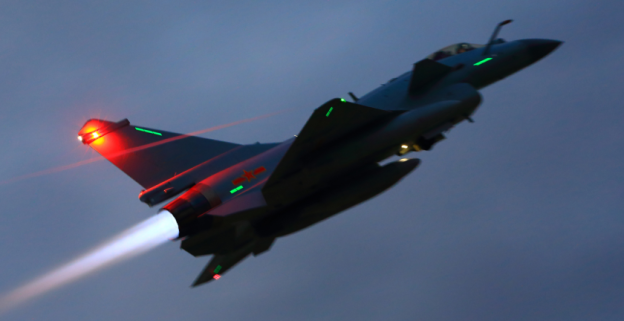 chinamil.com.cn
chinamil.com.cn
The J-10 can fly at a maximum speed of 2,327km/h at high altitudes. Its maximum speed at sea level is 1,470km/h. The range and combat radius of the aircraft are 1,850km and 550km respectively. Its service ceiling is 18,000m. The aircraft weighs around 9,750kg and has a maximum take-off weight of 19,277kg.
Specification J-10A
| Modification | J-10 |
| Wingspan, m | 8.78 |
| Length m | 14.57 |
| Height, m | 4.78 |
| Wing area, m2 | 33.05 |
| Weight, kg | |
| empty aircraft | 9800 |
| normal takeoff | 18,000 |
| Fuel l | |
| internal | 2625 |
| PTB | 4165 |
| engine’s type | 1 TRDF AL-31FN |
| Thrust, kgf | |
| normal | 1 x 7600 |
| afterburner | 1 x 12500 |
| Maximum speed, km / h | M = 2.00 |
| Cruising speed, km / h | 1110 |
| Practical range, km | 2000 |
| Practical ceiling, m | 18,000 |
| Max. operational overload | 9 |
| Crew | one |
| Armament: | one 23mm cannon. combat load – 7260 kg on seven nodes of the external suspension; it is possible to place air-to-air missiles of PL-8, PL-10, PL-11, P-27 and R-73, as well as air-to-surface missiles of anti-ship missiles -8K, NAR, free-fall bombs and other weapons |
Source airwar.ru
Main material source airforce-technology.com
Images are from public domain unless otherwise stated
Revised Dec 08, 2018
Updated Nov 20, 2019










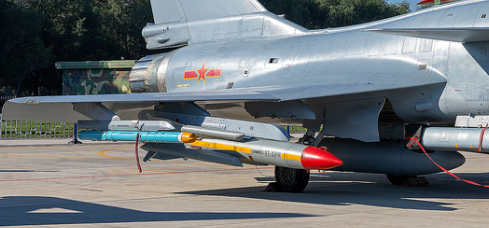


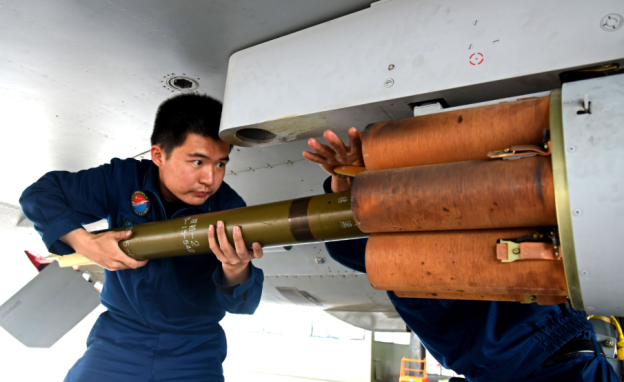



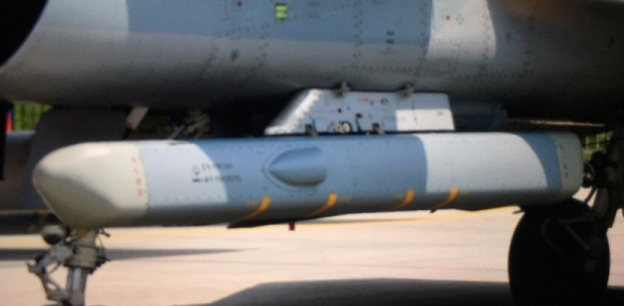



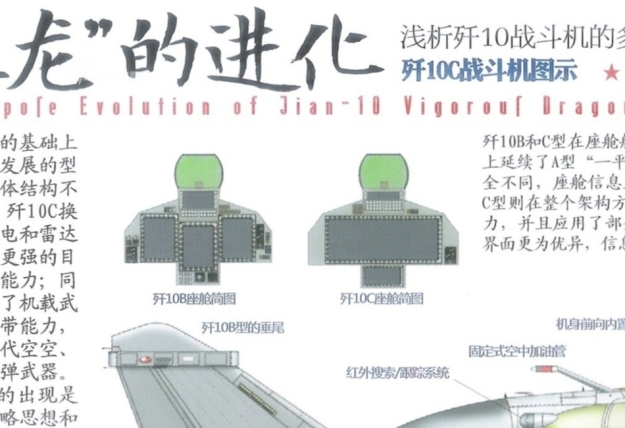





Pingback: Chengdu J-10, o caça leve multifunção chinês | VidShaker
I don’t think Laos has that kind of budget I’ll have to check
LikeLike
Is it true that Laos is looking at the J-10. I would think the JF-17 would fit Laos better than the J-10
LikeLike
Seems like it maybe 1 squadron, Thailand also have been training their pilots from what I heard
LikeLike
My error it is not Laos it is Cambodia that sent Air Force officers and they are very interested in getting some and they also came to Thailand for training https://www.facebook.com/photo.php?fbid=1068944286462686&set=p.1068944286462686&type=3&theater
LikeLike
Okay, I thought Laos was but then again, I think Laos should look at the JF-17
LikeLike